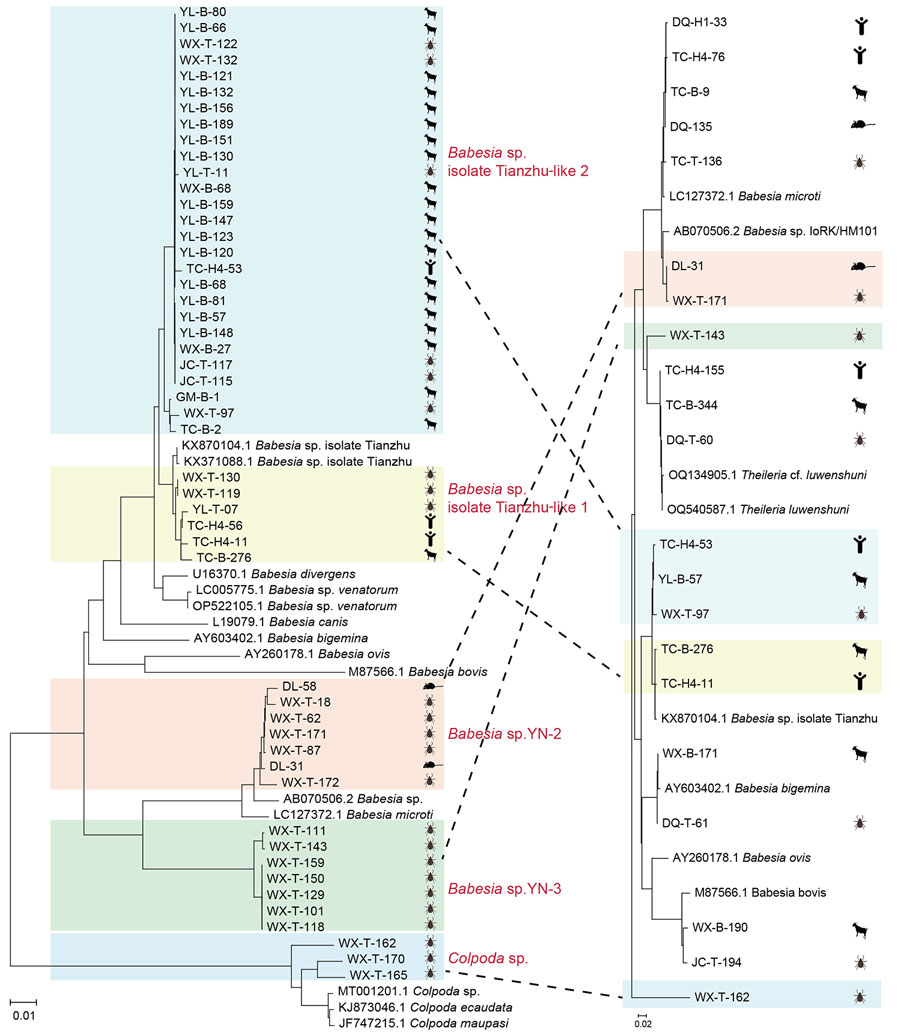Volume 31, Number 9—September 2025
Research
Theileria luwenshuni and Novel Babesia spp. Infections in Humans, Yunnan Province, China
Figure 4

Figure 4. Phylogenetic analysis of 18s rRNA (1,600-bp) gene sequences of Theileria and Babesia spp. isolates in study of piroplasmorida in humans, southwest China, May 2017–June 2020. Tree on the left highlights the sequences of novel variants/strains (accession nos. PQ722834–6, PQ722839–82). Tree on the right shows classification and distribution of all detected organisms across various hosts and vectors. Colored shading represents groups of isolates by strain. Dotted lines indicate the correspondence between different organisms, illustrating their ecologic and evolutionary connections. Left scale bar represents 0.01 substitutions per site; right scale bar represents 0.02 substitutions per site.
1These authors contributed equally to this article.